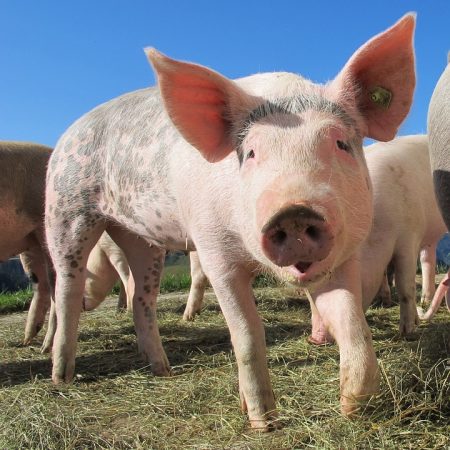When raising pigs, you want your herd to be as healthy as possible. You don’t want to spend money treating diseases that could have been prevented. Also, you want to raise healthy pigs because they are more productive and profitable. The best way to do this is to ensure that they live in a well ventilated building. Healthy pigs breathe easy. And when they do, you will too.
Why does ventilation matter?
Ventilation is aimed at not only providing fresh air, but also controlling the optimum temperature your pigs need for comfort and removing stale air.
Stale air is loaded with dust, harmful gases and disease-causing microbes. When there’s inadequate ventilation, stale air can trigger respiratory diseases and make your pigs ill. Furthermore, it causes unnecessary mortality, poor health and reduced production performance as well as hurting your pocket.
But, when you have a good ventilation system that regulates temperature and effectively circulates fresh air, your happy pigs will be healthy pigs. Below are a few factors that make ventilation important for your pigs:
Pigs are very sensitive to ambient temperature
Heard of the phrase “sweating like a pig?” Well, it’s not without honest foundations. The ambient temperature is neither too hot nor too cold. When it’s too cold, pigs use energy they take from food to stay warm. Therefore, they won’t grow very well. When it’s too hot, their appetites are suppressed. The air quality also deteriorates, leaving your pigs more susceptible to disease. Therefore, you need to control ventilation to help regulates the temperature.
You might also like: Four tips to keep your pigs healthy and happy
Temperature when feeding
Another important factor to consider is how much a pig has eaten. You see, the less a pig eats, the more warmth it needs to stay comfortable. An example is piglets that need warmth after weaning. During this period, their feed intake is very low.
Control humidity
You have to avoid relative humidity values of more than 80% and less than 50%. The ideal humidity for your piggery has to be somewhere between 60 and 80% (RH). This is because dry air can affect your pigs’ nasal mucosa and increases the risk of contracting infections. Furthermore, excess humidity provides ideal conditions for pathogens to spread.
Your building design
Building your piggery can get a little overwhelming especially when you’re trying to get your ventilation system right. Try to follow the following few basic principles when designing your piggery:
- The flow of air flow is directly depends on the size of the vents. The further apart the vents, the poorer the air flow will be.
- Draw fresh air from a lower level
- Extract stale air from a higher level
- During windy conditions, roof with little or no pitch is subject to suction and this helps the extraction of stale air
Apply damp-proofing to the floors and in wet areas, insulate with porous concrete. Also, try to insulate the roof where you can expect a high temperature.
You need to space your buildings at least 18m apart to combat the spread of disease as well as ensure effective air movement between the buildings.
Here’s raising healthy pigs!

i like the information so educative,,,,,,please am new about to start a pigary
i need more info
would like to receive any information concerning pig farming
Thank you very much for such educative information about rearing Pigs . I need d more information in various angles starting on Planning on how to raise pigs, feeding practices at all levels of growth, Types of suitable feeds especially in the Zambia contest.
I have just heard of grains and Soyabeans, Does groundnuts used for feeding Pigs?